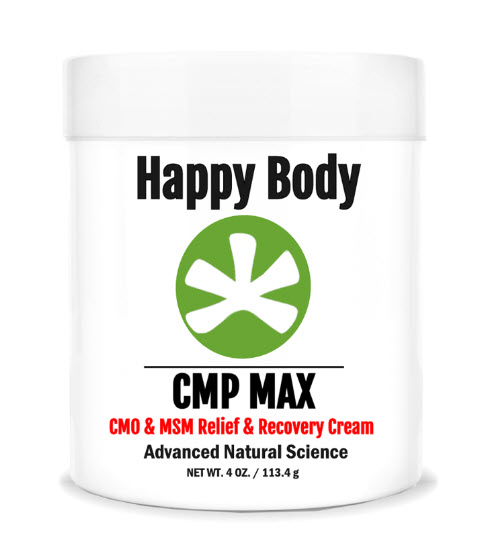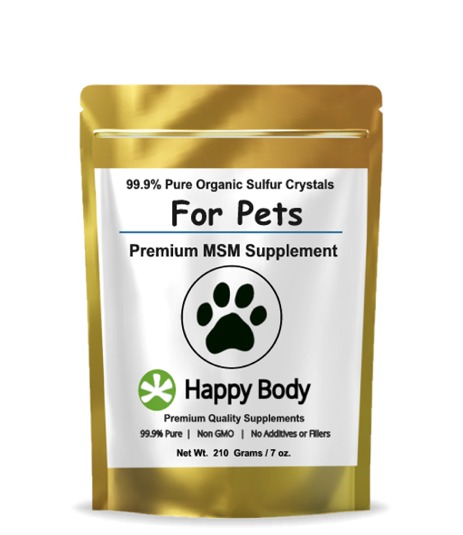How To Really Shop In The Age of C-19
+ Some Mask Insights & C-19 News
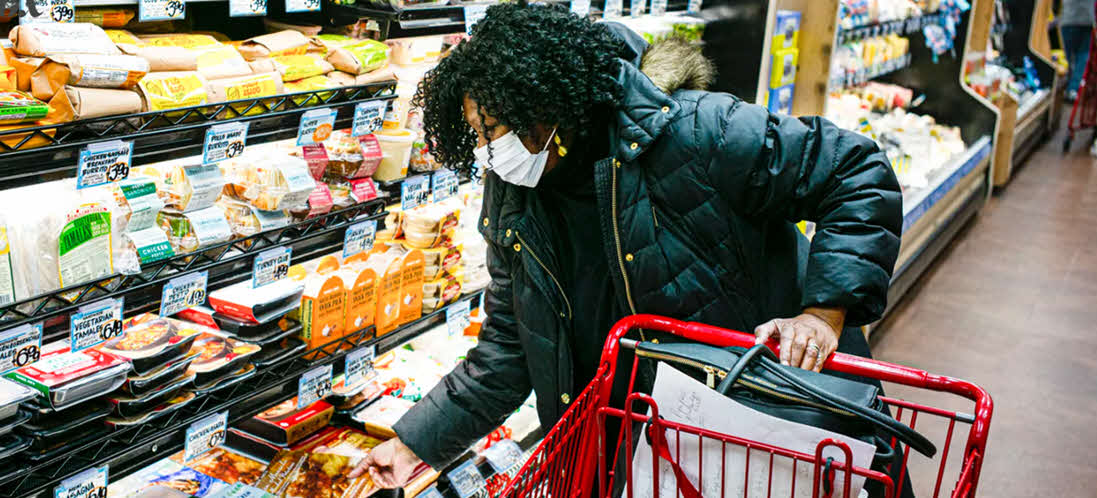
Who would have ever thought that grocery shopping would become an anxiety driven activity that many now consider worse than a trip to the dentist.
But it’s ok today we will break down exactly how to do it and stay safe.
We’ll also take a closer look at masks, how they are proposed to help, and due to a critical shortage, 3 ways to make your own mask.
Finally we wanted give you some very interesting new medical insight on C-19 that may help you better understand the risks of this virus and how to combat it.
The Grocery Store Dilemma
In our collective attempt to flatten the curve, grocery shopping has become a minefield.
We’re not supposed to leave our homes, yet we have to keep feeding ourselves; as a result, what used to be a comforting annoyance now feels downright dangerous.
- Can you touch that cereal box?
- Why is that person standing so close?
- Can you reuse your bags?
- Why isn’t there yeast?
There is a lot of guidance on how to handle the store, and a lot of it is actually confusing, if not just outright contradictory.
Wear gloves, now don’t wear gloves.
Don’t need to use a mask, oh but now use a mask.
It’s okay to get groceries, no use delivery instead.
So What to Believe & Do?
We decided to tackle this topic head on and provide you some best practices that seem to be agreed upon by ‘real-deal’ food scientists and virology experts.
The thing is not to panic when it comes to store trips.
Remember that while it may be possible to get sick by touching surfaces with the virus, the main way the virus spreads is still thought to be person-to-person contact.
So the big threat here isn’t pasta boxes; it’s other people.
As in someone “talking moistly” to another person, as Canadian Prime Minister Justin Trudeau stated, then immediately regretted saying lol…


Grocery Store Best Practices In The Age of C-19
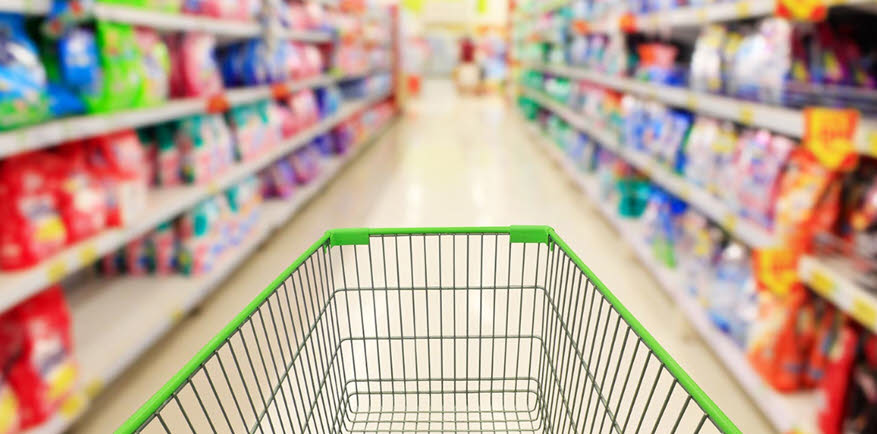
First, to help and prevent transmission, many stores are taking special safety precautions in light of COVID-19, such as limiting the number of people allowed in the store at one time, disinfecting carts and frequently touched surfaces, and placing tape or markings on the floor to help people remember social distancing guidelines.
These are actually a big help!
But there are still steps customers can take to reduce the spread of coronavirus and their risk of catching it at the store.
Before You Even Go
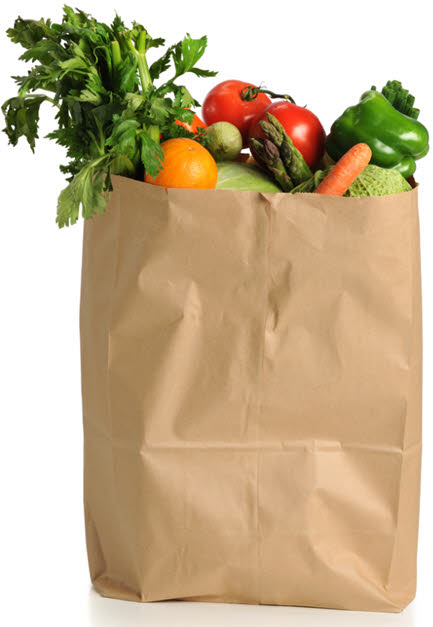
Decide whether you really need to go shopping at all.
If you only need a few items, try to get by with what you have and plan a big shopping trip for later.
If you have to go… go!
Delivery in all honesty was an option, but let’s be real, it’s getting harder and harder to get spots and times, so people don’t really have a choice anymore.
If you have to go, then do it, just try shopping at off-peak hours and buying as many items as you can from just one store. The days of multiple store shopping is over for the present time – it’s a bit like Russian roulette.
Also, don’t bring the whole family: It’s best to shop alone. This helps reduce the number of people potentially exposed.
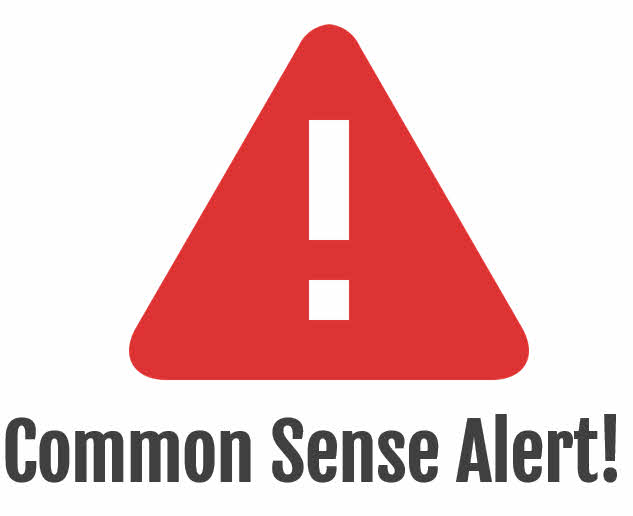
If you have ANY symptoms stay home!
It’s very important not to go anywhere if you are showing symptoms of COVID-19 (such as fever, cough or shortness of breath), or if you think you have been exposed to the virus.
It really does suck, but we have to think of others in this time because karma has a real hand in all of this.
When At The Store
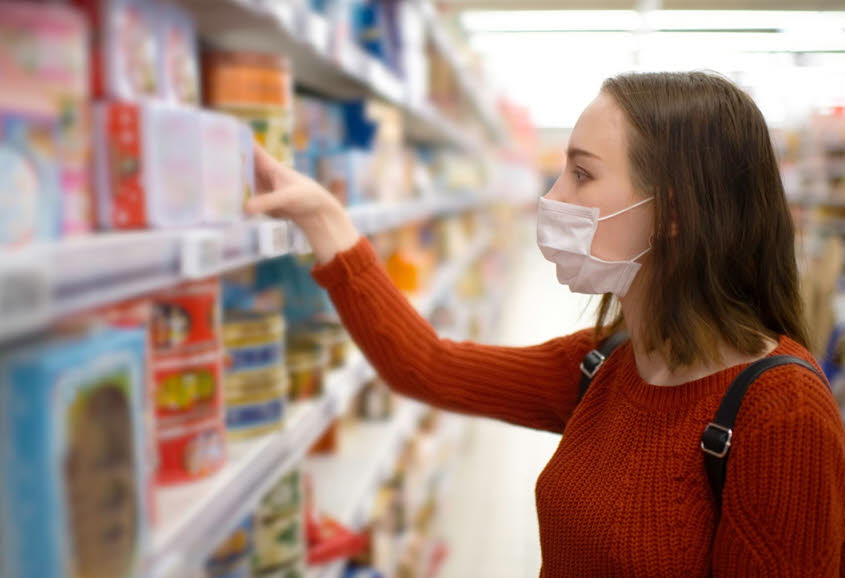
When you finally get to the store, these are the tips and guidelines that real experts in the field suggest and they tend to follow common sense which will help people manage the anxiety of getting food in these crazy times.
Sanitize Before & After
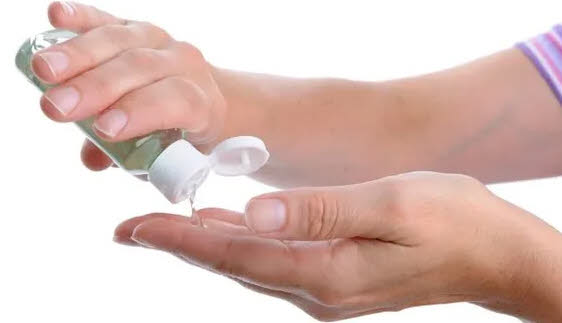
Use hand sanitizer literally BEFORE entering the store and literally just AFTER you leave the store.
The ‘before’ is to ensure that if you are a carrier that you are limiting and spread.
The ‘after’ helps limit any chance of you carrying anything out of the store back home.
Always try and bring your own sanitizing wipes to use on carts or basket handles, especially if your store is not already doing that for you.
If you don’t have any wipes or sanitizer, this is a great article that can teach you how to make your own.
Remember the No. 1 priority is still keeping physical distance from other people.
At the same time, we know the virus can live on surfaces for at least some amount of time, so while the risk is somewhat low you still want to avoid touching stuff as much as possible.
Touch only what you intend to buy. That means don’t pick up multiple produce items to try to find the ripest one, this is simply not the time for that.
Oh & About Your Phone
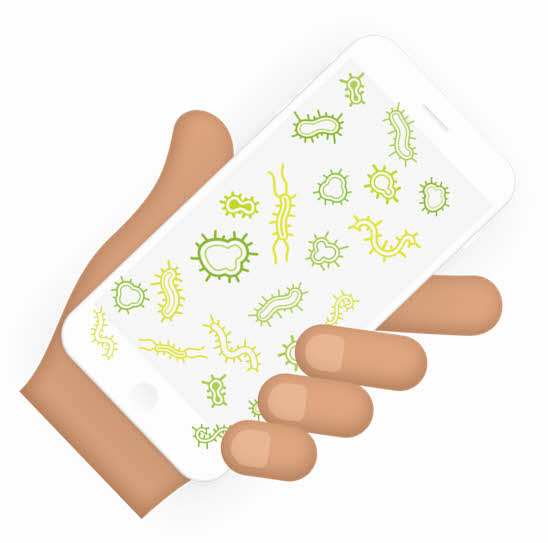
Consider leaving your phone in your pocket at all times, because to be frank, your phone is gross. It’s basically a germ magnet.
We spit on it when we talk, we touch it constantly, we put it down on stuff, we pick it up and rub it on our faces.
We suggest you stick to using paper lists at this time…
Here’s some proof of what a typical phone has in terms of germ content.

In fact a study done in 2017 at the University of Arizona showed that phones carry up to 18x more germs than a public washroom – gross…

Wash your phone & case with sanitizer or rubbing alcohol/sanitizing wipe when you get home.
Masks Are Now ‘In’

This represents a major change in the country’s approach to fighting the spread of the coronavirus.
Until now, the CDC had been advising healthy people not to wear masks unless they were showing symptoms or had reason to believe they’d been exposed.
But — as many other experts have been pointing out for weeks – one problem with that guidance is that there’s no way to know who has it.
As many as a quarter of coronavirus cases are asymptomatic, CDC director Robert Redfield said in the week leading up to the new guidance.
Even people who do eventually get sick can transmit the virus for days or weeks before even showing any symptoms.
The logic here is pretty straightforward: Since coronavirus mostly spreads when germ-containing droplets make their way into a person’s mouth, nose, or eyes, it makes sense to try to limit how many droplets are floating around in crowded spaces.
The big caveat is that traditional medical masks still should go to medical professionals first.
So while a a cloth mask isn’t as good as a medical one, it still offers some protection for yourself, and if you’re – god-forbid – symptomatic, then you are helping to protect others.
We will cover more on masks further below.
Remember To Always Be Distant
Be one with social distancing rules. As with any public setting, you should maintain a distance of at least 6 feet (1.8 meters) from others.
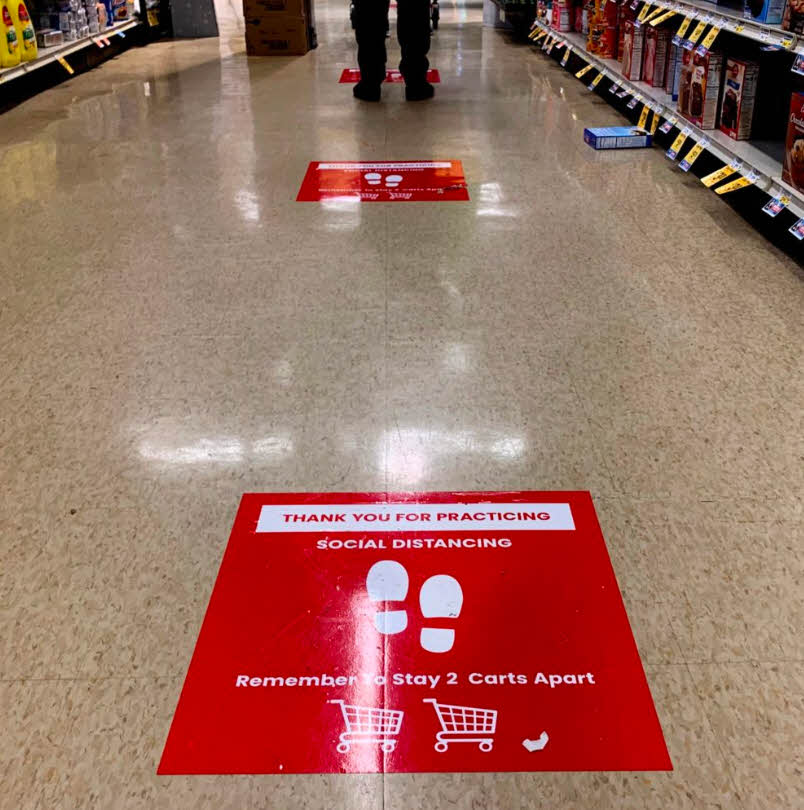
Glove Or Not To Glove?

According to many experts wearing gloves to the store really isn’t necessary because the gloves become contaminated the same way your hands do, and just end up carrying germs to potentially more surfaces.
Washing or sanitizing your hands before and after entering the store is what’s most important.
But if you choose to wear gloves, and it is personal choice, use disposable ones and discard them before you get into your car.
If you’re on foot or taking public transportation do so after you get home.
In fact, some like wearing gloves when out as a simple reminder not to touch their faces.
So wearing or not wearing gloves is really still a personal choice.
The key is simply when to chuck them (as soon as you leave the store) and washing your hands well once you return home, and once again after putting your groceries away.
Hand washing that is frequent is the key to limit personal transmission.
Pro Tip: If you want to use gloves always use disposable ones and double up. When you come out of the store, get your food to the car and then dispose of the top set. Put the food in the car and dispose of the second set and sanitize your hands before you start diving. Just keep a disposable baggie around to hold the disposed of gloves.
Always remember – Don’t touch your face: Avoid touching your eyes, nose and mouth with unwashed hands.
Hoarding Is Not Needed
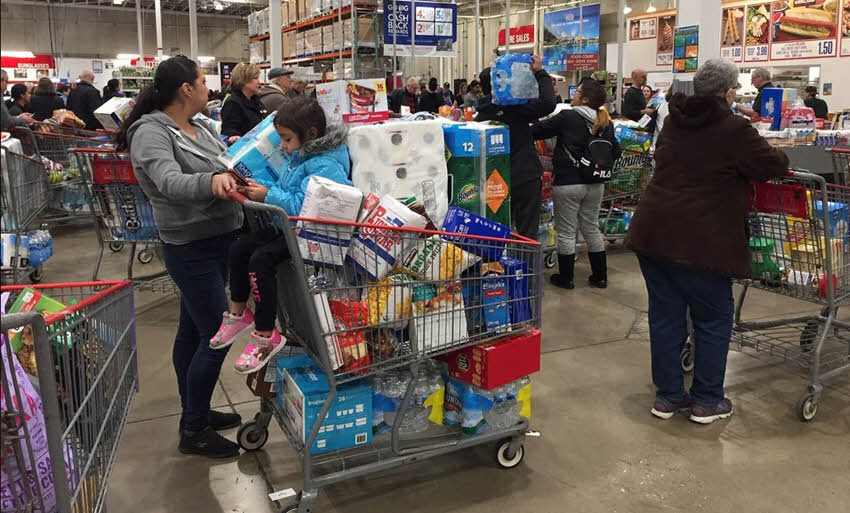
In times of crisis, we are programmed to ensure our own family’s safety and well being over others.
Just try and remember that hoarding can actually have a very negative impact on older adults and those with disabilities who may have a more difficult time purchasing needed supplies.
Further, according to Brian Labus, PhD, MPH, an assistant professor at the University of Nevada, Las Vegas School of Public Health, it’s important to note that during a pandemic the food and water supply will remain intact. There’s no reason to stockpile supplies.
- Nuclear war risk – hoarding acceptable
- Zombie apocalypse – hoarding acceptable
- Pandemic – no hoarding needed 🙂
Cash, Cards or Phone Payments?
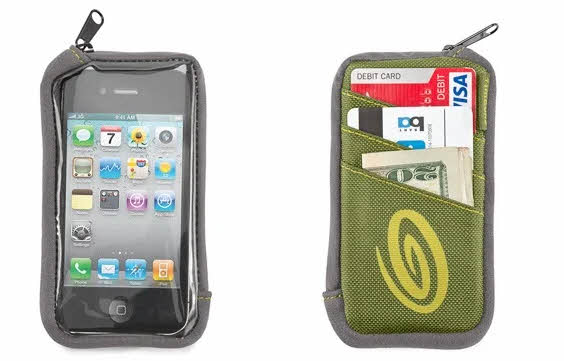
Try and not use your phone as mentioned.
As for cash versus credit? There’s really no good answer here.
Paying with plastic often means touching a pin pad; but cash isn’t known for being especially clean.
So in the end pay how you want, the most important thing is washing your hands with sanitizer when you get back to your car and then again at home with soap and water.
When You Get Home
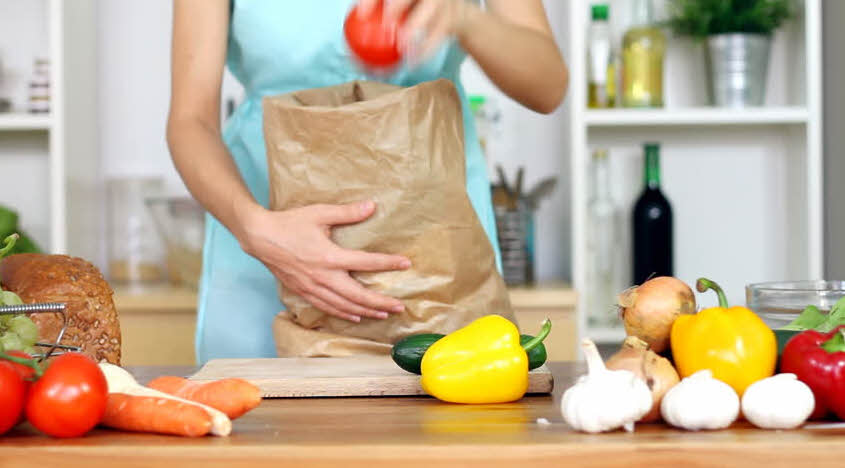
Don’t leave your food outside.
Many people on social media have suggested leaving your groceries in your garage for three days to kill the virus, this is hands down bad advice. Not only is it not scientifically proven, it’s also a real food safety issue.
So bring in your food. Once in the door take off your shoes right away.
Once in the kitchen make a specific area on your counter where you take out all the products for placement.
Dealing With Your Fresh Produce
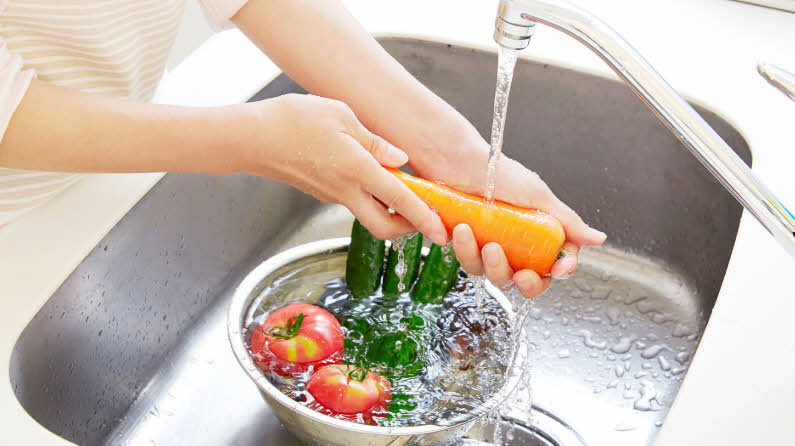
Rinse your produce, which is always a good idea — even when there’s no pandemic — rinse all of fresh fruit and vegetables with water to remove dirt, debris and pesticides, and reduce levels of foodborne germs.
Don’t use soap on your fresh produce!
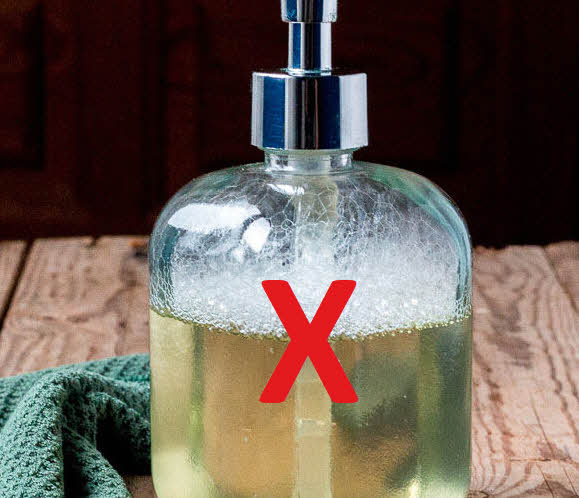
There’s no need to use soap or chemical disinfectants on your produce.
Dish soap is not approved for use on foods, and consuming it could lead to nausea and upset stomach.
Dealing With Your Packaged / Non-Fresh Food
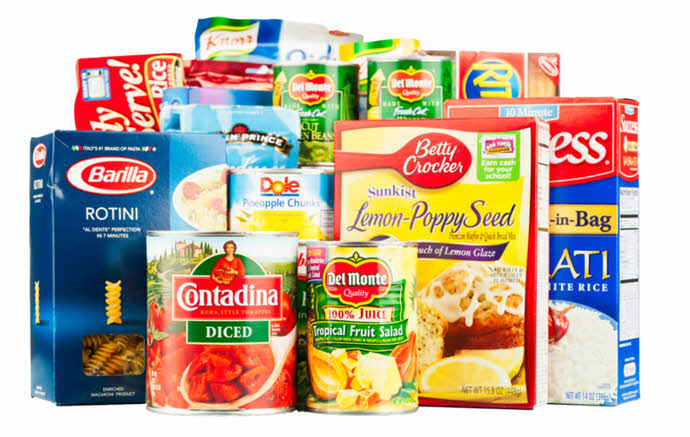
Food handling experts and virologists agree. You do NOT need to worry about disinfecting each box, can or package.
“I am not recommending disinfecting your groceries,” states Don Schaffner, a professor of food microbiology at Rutgers School of Environmental and Biological Sciences. “This seems like being overly cautious. We don’t know of any cases of COVID-19 transmitted by food, nor of any cases transmitted by food packaging.”
That’s pretty much what the FDA is saying, too. In a statement on March 24, Frank Yiannas, the FDA’s deputy commissioner for food policy and response, noted that “there is no evidence of human or animal food or food packaging being associated with transmission of the coronavirus that causes Covid-19.”
The key here is once you have put away your packaged goods, wipe down & sanitize the area you used to unpack your groceries, then wash those hands for at least 30 seconds in proper WHO format.
Reusable Bags Or Disposable Bags?
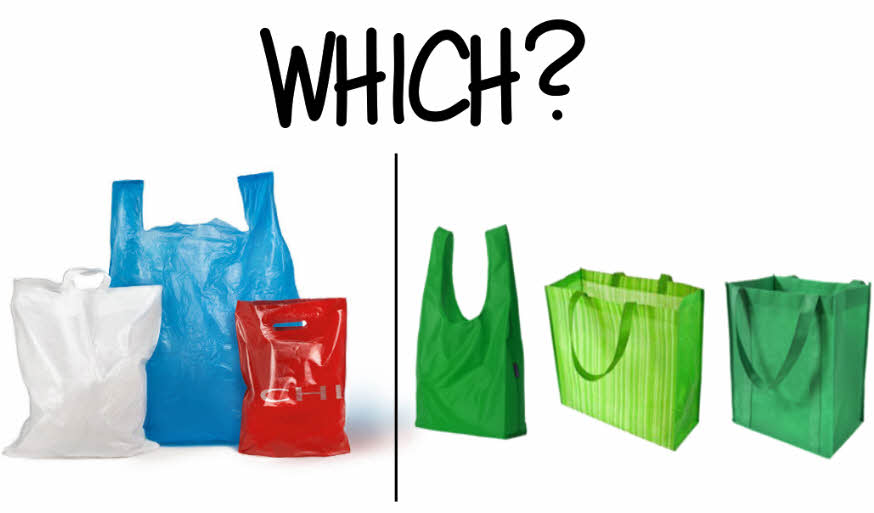
From what we have researched, most experts are saying not to use recyclable bags at this time.
If you do use reusable bags that’s just one more thing to worry about and have to ensure get washed.
For now, we opt for plastic/paper disposable bags.
Mask Making 101

For a while, it felt as though advice from health professionals was changing every day about whether people should be wearing face masks to help prevent the spread of the coronavirus.
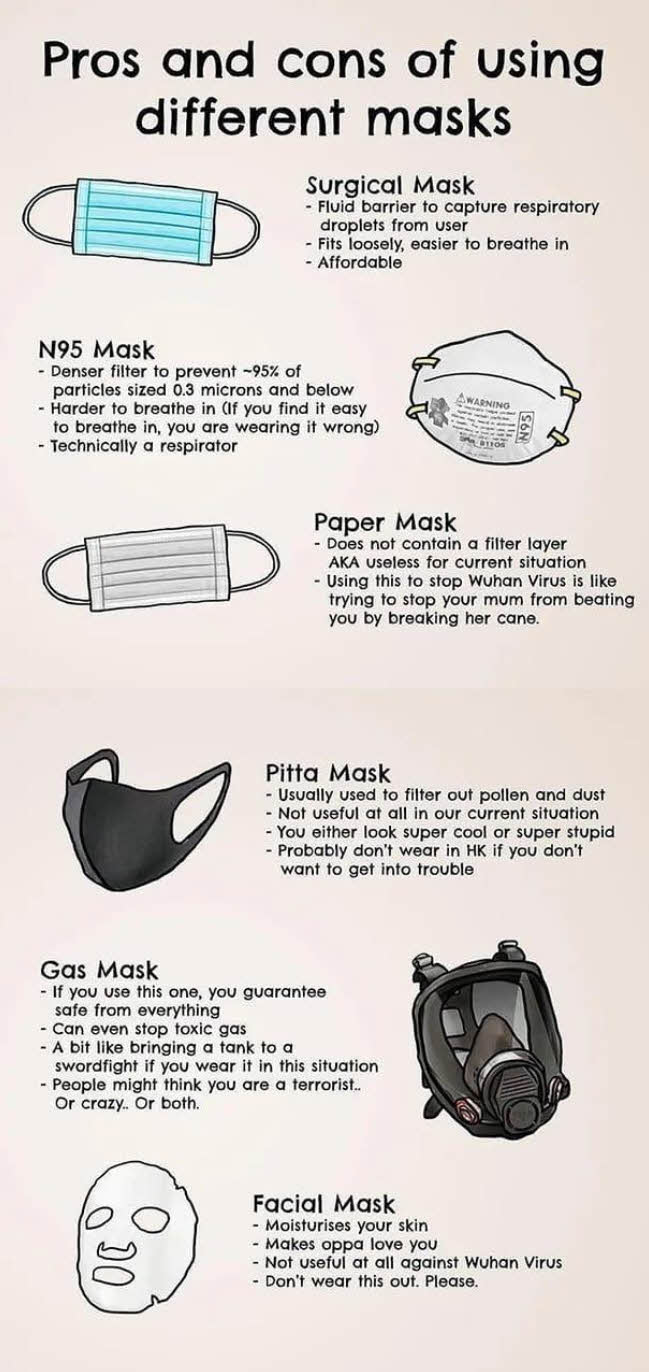
But now the CDC has now officially recommended that everyone but infants should wear a cloth mask or face covering in certain public settings.
The guidance had been frustratingly confusing, particularly in the midst of a pandemic where official directives have been inconsistent or outright dangerous.
But we now have more consensus. Any basic facial covering is deemed good as it can help limit transmission.
Making Masks At Home
Essentially, what you’re shooting for here is not ironclad protection but rather a bolstered line of defense for both yourself and, notably, the people around you.
Coronavirus appears to mostly spread when germ-containing droplets make it into a person’s mouth, nose, or eyes.
If you have a physical barrier in front of your mouth and nose, that’s simply less likely to happen – sorry all you “moist speakers” out there.
There are official guidelines from the CDC on what qualities homemade masks should have, such as including multiple layers of snug-fitting fabric and holding up to machine washing.
It also suggests what types of fabric to seek out including: tightly woven cotton, such as quilting fabric or cotton sheets. T-shirt fabric will also work, but tighter woven fabrics work better.
Cloth face coverings should not be placed on young children under age 2, anyone who has trouble breathing, or is unconscious, incapacitated or otherwise unable to remove the mask without assistance.
Sewn Mask Method
(From The CDC)
The CDC has released 3 versions of make-at-home masks, including 1 sewn and 2 no-sew versions.
The sewn version requires the most work (and of course has the longest instructions) which can be seen by clicking below.
Click To See How
Materials
If you’re very good at sewing there is a full PDF version we have that you can download that offers much more direction and images.
Bandana Face Covering
(No Sew Method 2 – From the CDC)
And Finally:
A Very Interesting COVID-19 Medical Insight
Dr. Cameron Kyle-Sidell, an emergency medicine physician at Maimonides Medical Center in New York posted this video on YouTube a few days ago.
In the video he suggests that COVID-19 is not like pneumonia where phlegm and mucus create the issues with breathing.
Instead, he believes that from the hundreds of patients with COVID-19 he has managed, that the virus acts to starve cells of oxygen.
Kyle-Sidell said that “COVID-19 lung disease, as far as I can see, is not a pneumonia” but seems to be “some kind of viral-induced disease most resembling high altitude sickness.”
“These patients are slowly being starved of oxygen … and while they look like patients absolutely on the brink of death, they do not look like patients dying of pneumonia.”
This makes a lot of sense.
We keep hearing the main symptom is “difficulty breathing” but there is no real mention of phlegm/mucus or wheezing.
The cough is dry not wet. There is no runny nose, but instead there is a headache.
That does sound more like the typical symptoms associated with high altitude sickness versus pneumonia.
The Doctor is basically suggesting that the virus is affecting the body and cells directly causing them to deoxygenate.
The definition of “deoxygenate” – To remove oxygen from water or blood.
This is why he is suggesting that ventilators only need to provide supplemental oxygen support not pressure.
Today many doctors use ventilators to both provide oxygen and pressure to the lungs for COVID-19 patients, and this may not be the way to go.
This medical insight also highlights yet another big reason to continue using Organic Sulfur daily as it has been clinically shown to help increase ‘oxygenation’ of the blood and cells.
Source: Methylsulfonylmethane Inhibits RANKL-Induced Osteoclastogenesis in BMMs by Suppressing NF-κB and STAT3 Activities Youn Hee Joung,Pramod Darvin,Dong Young Kang,Nipin SP,Hyo Joo Byun,Chi-Ho Lee,Hak Kyo Lee,Young Mok Yang Published: July 22, 2016https://doi.org/10.1371/journal.pone.0159891
Organic Sulfur does this by optimizing the efficiency of “oxygen transport” from the blood into cells.
Sulfur accomplishes this by increasing the permeability of the cellular membrane, which helps optimize the cells ability to uptake and transport oxygen from the blood into the cell.
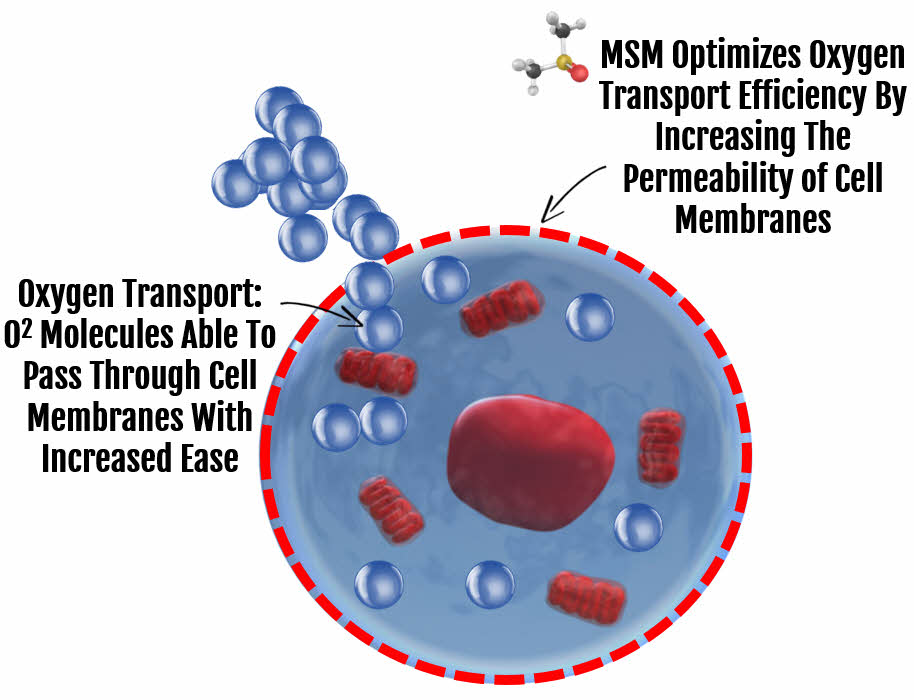
It’s also important to note that while this doctor’s insights are not proven yet, it does showcase the fact that there is still so much we do not understand about COVID-19.
As we gain experience, we gain insights and that can help steer treatment and prevention during this time, and more knowledge is more power.
Stay safe, be well and enjoy the long weekend!
The Big Stock Up Sale EXTENDED
![]() Get Big EXTRA Discounts On Our Already Discounted Multi Packs
Get Big EXTRA Discounts On Our Already Discounted Multi Packs

![]() Save An EXTRA $3.00 On All Discounted Single Packs
Save An EXTRA $3.00 On All Discounted Single Packs

![]() No Promo Code Required All Discounts Are Pre-Applied
No Promo Code Required All Discounts Are Pre-Applied
See Pricing
Shop Organic Sulfur Crystals


 Rated 4.83/5 Stars
Rated 4.83/5 Stars
 Pure, Additive-Free MSM – 1 lb. Bag
Pure, Additive-Free MSM – 1 lb. Bag
 Fast & Free Shipping To Your Door
Fast & Free Shipping To Your Door
Shop Organic Sulfur Canada
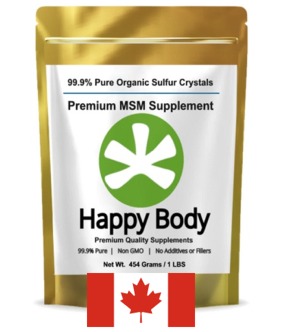

 Rated 4.83/5 Stars
Rated 4.83/5 Stars
 Pure, Additive-Free MSM – 1 lb. Bag
Pure, Additive-Free MSM – 1 lb. Bag
 Fast & Free Shipping To Your Door
Fast & Free Shipping To Your Door
Shop Pure MSM Drops
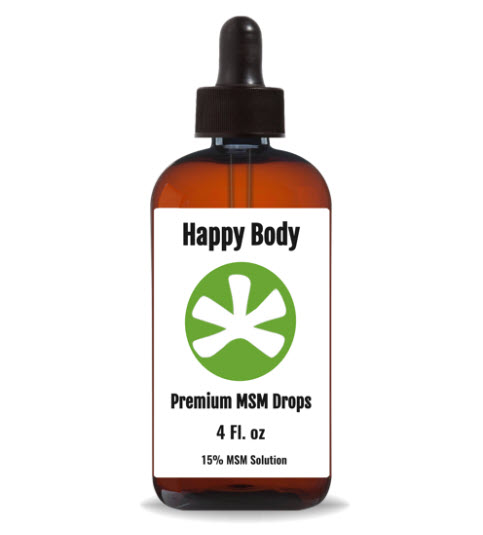

 Rated 4.67/5 Stars
Rated 4.67/5 Stars
 Add The Power of MSM To Anything
Add The Power of MSM To Anything
 Fast & Free Shipping To Your Door
Fast & Free Shipping To Your Door
Why Customers ❤️ Us
Professional-Grade MSM For Everyone
Exclusively produced for health & wellness professionals now available direct for everyone.
Certified Quality & Purity
Know that you’re buying the best. Each batch of our MSM is 3rd party, independently certified for purity, also tested for heavy metals & VOC’s.
Free Shipping & Priority Support
Get free, fast shipping to your door 2 – 3 days avg. Get priority level support for all your MSM & order questions
Your Satisfaction IS 100% Guaranteed
Your satisfaction with our MSM is 100% guaranteed try it & love it for 90 days or your money back.
Questions or Want To Order?
Get In Touch 9:00am – 4:30pm EST (New York Time)
Remember, if we are unable to answer your call, leave a message we WILL call you back asap.
Questions or Want To Order?
Get In Touch 9:00am – 4:30pm EST (New York Time)
Remember, if we are unable to answer your call, leave a message we WILL call you back asap.
Article Research Credits:
- World Health Organization
- Wikipedia
- CNN
- The Guardian
- The New York Times
- WebMD
- The Wall Street Journal
Disclaimer: Information presented on this site is of a general nature used for educational and information purposes only, it should NEVER be used as medical advice or as a basis for self diagnosis. Statements or opinions about products and health conditions have not been evaluated by the US Food and Drug Administration (The FDA). Products and information stated herein are not intended to diagnose, treat, cure, or prevent any disease or condition. If you have any concerns about your own health or are wanting to use a new mineral supplement, vitamin or herbal supplement, you should always consult with your physician or other healthcare professional first. This is the same for your pet, always first consult with your veterinarian before using any new pet supplement or vitamin first.




